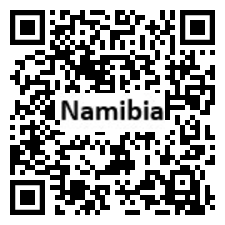Introduction
Background
South Africa occupied the colony, then known as German South West Africa, in 1915 during World War I and administered it as a mandate until after World War II. In 1966, the Marxist South-West Africa People's Organization (SWAPO) guerrilla group launched a war of independence for the area that became Namibia. Namibia gained independence in 1990 and has been governed by SWAPO since, though the party has dropped much of its Marxist ideology.
Geography
Area
total: 824,292 sq km
land: 823,290 sq km
water: 1,002 sq km
Climate
desert; hot, dry; rainfall sparse and erratic
Natural resources
diamonds, copper, uranium, gold, silver, lead, tin, lithium, cadmium, tungsten, zinc, salt, hydropower, fish; note - suspected deposits of oil, coal, and iron ore
People and Society
Population
2,777,232 (2023 est.)
Ethnic groups
Ovambo 50%, Kavangos 9%, Herero 7%, Damara 7%, mixed European and African ancestry 6.5%, European 6%, Nama 5%, Caprivian 4%, San 3%, Baster 2%, Tswana 0.5%
Languages
Oshiwambo languages 49.7%, Nama/Damara 11%, Kavango languages 10.4%, Afrikaans 9.4% (also a common language), Herero languages 9.2%, Zambezi languages 4.9%, English (official) 2.3%, other African languages 1.5%, other European languages 0.7%, other 1% (2016 est.)
Religions
Christian 97.5%, other 0.6% (includes Muslim, Baha'i, Jewish, Buddhist), unaffiliated 1.9% (2020 est.)
Population growth rate
1.66% (2023 est.)
Government
Government type
presidential republic
Capital
name: Windhoek
Executive branch
chief of state: Acting President Nangolo MBUMBA (since 4 February 2024); Acting Vice President Netumbo NANDI-NDAITWAHNOTE (since 4 February 2024); note - the president is both chief of state and head of government; President Hage GEINGOB died on 4 February 2024, and Vice President MBUMBA was sworn in to run the government until the next presidential election in November 2024
head of government: Acting President Nangolo MBUMBA (since 4 February 2024); Acting Vice President Netumbo NANDI-NDAITWAHNOTE (since 4 February 2024); Prime Minister Saara KUUGONGELWA-AMADHILA (since 21 March 2015); note - the prime minister is appointed by the president to coordinate the work of the cabinet, advise the president, and is second in line of succession if the president is unable to serve; note - President Hage GEINGOB died on 4 February 2024, and the Vice President MBUMBA was sworn in to run the government until the next presidential election in November 2024
Legislative branch
description: bicameral Parliament consists of:
National Council (42 seats); members indirectly elected 3 each by the 14 regional councils to serve 5-year terms); note - the Council primarily reviews legislation passed and referred by the National Assembly
National Assembly (104 seats; 96 members directly elected in multi-seat constituencies by closed list, proportional representation vote to serve 5-year terms and 8 nonvoting members appointed by the president)
Economy
Economic overview
upper middle-income, export-driven Sub-Saharan economy; natural resource rich; Walvis Bay port expansion for trade; high potential for renewable power generation and energy independence; major nature-based tourist locale; natural resource rich; shortage of skilled labor
Real GDP (purchasing power parity)
$25.061 billion (2022 est.)
$23.299 billion (2021 est.)
$22.506 billion (2020 est.)
Real GDP per capita
$9,800 (2022 est.)
$9,200 (2021 est.)
$9,000 (2020 est.)
Agricultural products
beef, milk, grapes, millet, maize, mutton, pork, chickens, goats, wheat
Industries
mining, tourism, fishing, agriculture
Exports
$5.099 billion (2022 est.)
$4.246 billion (2021 est.)
$3.838 billion (2020 est.)
Exports - partners
China 29%, South Africa 20%, Botswana 8%, Belgium 6%, Zambia 4% (2020)
Exports - commodities
diamonds, uranium, copper, gold, fish products, aircraft, ships (2021)
Imports
$7.313 billion (2022 est.)
$6.384 billion (2021 est.)
$4.886 billion (2020 est.)
Imports - partners
South Africa 40%, Zambia 20%, Democratic Republic of the Congo 6%, China 5%, Bulgaria 3% (2020)
Imports - commodities
copper, refined petroleum, delivery trucks, cobalt, cars (2020)
Exchange rates
Namibian dollars (NAD) per US dollar -
Exchange rates:
16.356 (2022 est.)
14.779 (2021 est.)
16.463 (2020 est.)
14.449 (2019 est.)
13.234 (2018 est.)
Page last updated: Wednesday, April 17, 2024
